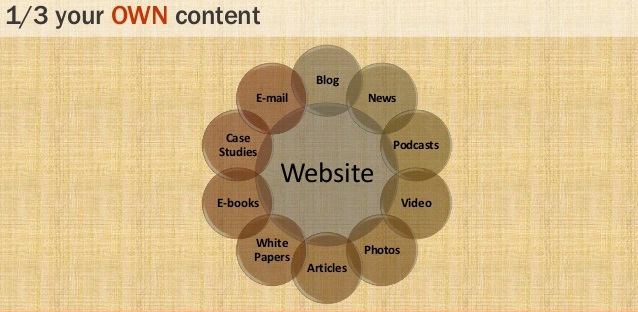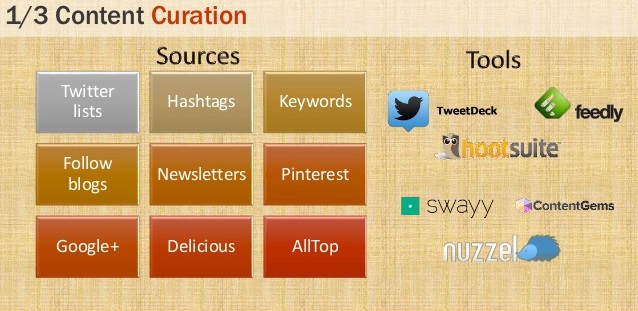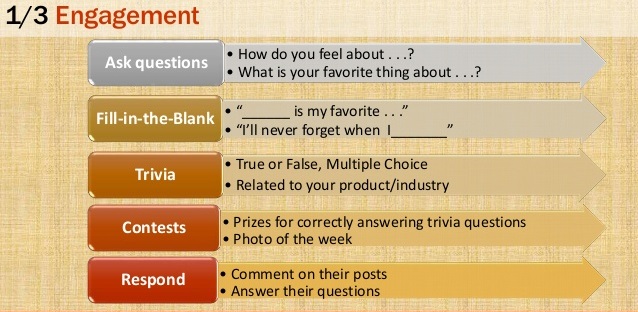
[inlinetweet prefix=”” tweeter=”” suffix=””]Social media can’t survive without content. [/inlinetweet] It’s like Amazon without books (or digital music, or household items, or . . . oh, you get the point). But posting on social media can be intimidating, especially for those who are new to it. Really, what are you supposed to post?
That depends a lot on your audience, which specific network you are posting to, and even what type of voice your company has decided to use. However, there are a few tips that work universally. Here I’ll focus on two specific concepts that have been accepted as best social media practices—posting “RITE” content and following the “Rule of Thirds.”
You’ve Got the RITE Stuff
The truth is, there is a bit of trial and error involved with social media. Sometimes you won’t really know what is going to resonate with your audience until you start posting. But that doesn’t mean you should throw just anything against the wall to see what sticks. [inlinetweet prefix=”” tweeter=”” suffix=””]If you make sure you’re posting RITE content, you increase your chances of social media success.[/inlinetweet]
RITE stands for:
Relevant – Does it matter to the audience you are trying to reach? Does it coincide with their interests, needs,and wants?
Interesting – Is the topic and the way it is presented compelling, or is it an unintentional sleep aid?
Timely – Has this topic’s 15 minutes of fame passed? Can it help anyone right now?
Educational – If your content does nothing else, it should at least teach your readers something.
Of course, not everything you post will hit all of these benchmarks, but every post should be at least one of these things.
The Rule of Thirds
So where does this “RITE” content come from? Well typically, content falls into one of three categories: your own content, curated content and engagement. A good (and often cited) guideline is the Rule of Thirds. In other words, your social media presence should contain an equal amount of content from each category. Let’s look a little closer at these categories:
1/3 your OWN CONTENT
This is where a lot of social media “newbies” stumble. They use social media much like the marketing methods of old by only broadcasting their own messages. But that’s just not how social media works. It’s meant to be a way to build relationships, and just as in life, you aren’t going to do that by shouting at people about yourself all the time. That’s why we always recommend that only a third of your social media activity be your own content.
However, it is important that you share some of your own information. Branding is a reasonable and achievable goal in social media. If you don’t have a blog, you should have one. It’s a great way to create content that serves as both positive branding (positioning you as an expert) and as a valuable resources for your audience. Remember, social media is rented space. At any time, a social network can change its algorithm to limit your visibility, or it could fall out of popularity (Remember MySpace? Anyone?). A blog gives you a place to bring visitors where you can control the message.
Remember, content isn’t just blog posts. If you are constantly publishing links to blog articles, you run the risk of boring your audience. Here are some other ideas:

1/3 CURATED CONTENT
So what the heck is curated content? Simply, it’s content you find from other places on the internet that you share with your audience via social media. If you are keeping up with your industry, this should be easy. All you have to do is share the relevant blog posts, news articles, social media updates, etc., that you are reading anyway and think your audience would also enjoy. By doing this, you position yourself as the go-to source of industry information. And if they come to you for information, who do you think they will go to when it comes time to buy?
With so much content available to curate, it’s tough to know where to begin. That’s why you may want to turn to one of the tools listed below to help you sort through all of the information out there and select the best items to share with your audience.

1/3 ENGAGEMENT
You’ll hear it over and over: Social media has “social” in it for a reason. If you are just using it to broadcast your message, you will bore and alienate your audience. You need to engage with them.
Engaging isn’t simply waiting around for someone to say something interesting and responding to it. You can and should actively encourage engagement by asking questions or posting updates that motivate people to respond. For instance, an automotive repair shop owner could ask a question such as, “Where did you take your last road trip?” Or they could post a fill-in-the-blank update that would encourage people to finish the sentence, “My first car was ____.”

Figuring out what to post to social media can be tricky, but following these well-established best practices can make it easier. Before you know it, you’ll be posting social media content like a pro.
Editor’s Note: This post is part of a larger presentation titled “What Should You Post?”
